Among several railway items displayed at the Cynon Valley Museum is the metal British Railways (Western Region) sign from Abernant Station (not the sign pictured above).
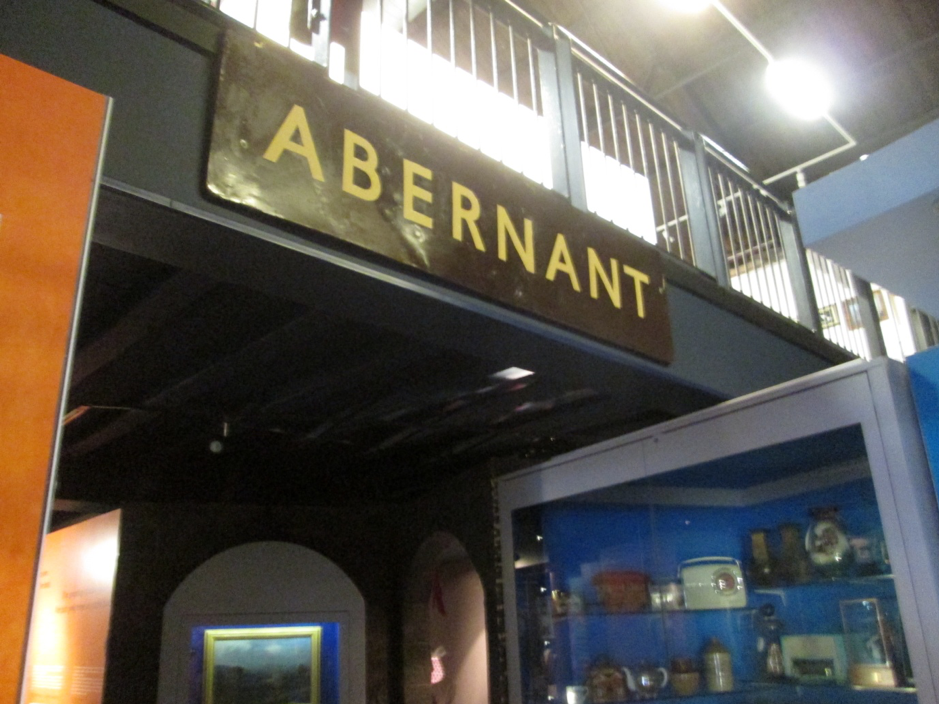
Abernant Station sign on display at Cynon Valley Museum. Photography courtesy of Geoffrey Evans
Abernant Railway Station
The station was opened in November 1854 when the Vale of Neath line to Aberdare (1851) was extended from Gelli Tarw Junction (near Hirwaun) to Merthyr Tydfil.
The engineer of the line was I. K. Brunel who laid down a single broad gauge line; a third rail allowing mixed gauge was added later.
The stations on this branch were Llwydcoed – Abernant – Merthyr. Soon after leaving Abernant the line passed through a 2,497 yard long tunnel; the journey between Abernant and Merthyr took just 12 minutes; Abernant to Llwydcoed 7 minutes (based on departure times).
Another original feature of the line was a gigantic timber viaduct built at an elevation of 100 feet. This stood near Nixon’s Colliery; known as the Werfa viaduct, travellers were known to ‘hold the breath and become nervous’ on crossing. The viaduct was replaced with an embankment.
Some remains of the station remain, notably the platform. This can be seen opposite the Rhoswenallt Inn, Abernant.
- Abernant Station c. 1870 (06/c/b/019 c)
- Departure time at Abernant Station – 06/c/b/018
The ‘most antiquated line’ of the GWR
Reaching the station from the town of Aberdare entailed either a long steep climb or hiring a cab. Although picturesque and convenient, for many years the station was unloved.
In October 1891 The Board of Health were concerned at its lack of facilities, recording that it did not think there was any place in England worse than Abernant station; it was a disgrace to any line of railway. The chairman (R. H. Rhys) noted that 300,000 passengers a year used it, and yet there was no accommodation there, or even the decencies of life.
Matters had not improved five years later and in June 1896, a local newspaper called it the most antiquated and ill-suited railway station under the control of the (then) Great Western Railway; a move was suggested to the Cardiff Exhibition of that year. Pressure was exerted and in 1897 the station was improved.
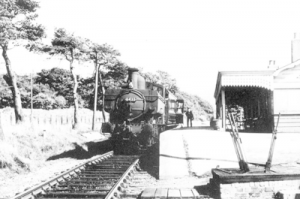
Abernant station in 1951 (06/c/b/022)
The 1951 photograph above is reminiscent of Edward Thomas’ I Remember Adlestrop (1917).
“The steam hissed. Someone cleared his throat.
No one left and no one came
On the bare platform. What I saw
Was Adlestrop—only the name”
The line was closed in December 1962 and there are proposals to re-open the tunnel to cyclists and pedestrians as a link between Aberdare and Merthyr.

The Merthyr Tunnel at Cwmbach (RCT Library Service Digital Archive 06/c/b/050)
Notes
Abernant takes its name from a stream, the Nant. This can be seen emerging from a culvert and joining the Cynon directly underneath the Aberdare railway station.
The ancient parish road connecting Aberdare and Merthyr was via Abernant. The road descended into Heolgerrig.
Abernant grew as a community when the Abernant Ironworks opened in 1801, depicted below.
The Rhos Wenallt Inn opened in 1881.
This line was probably frequently used by the Board’s Chairman, Rees Hopkin Rhys, whose public duties as a Magistrate, and Chairman of several Boards would have necessitated him travelling to Merthyr.
Aberdare and Merthyr were once closely connected for administrative purposes e.g., they formed a joint parliamentary constituency and a poor law union.
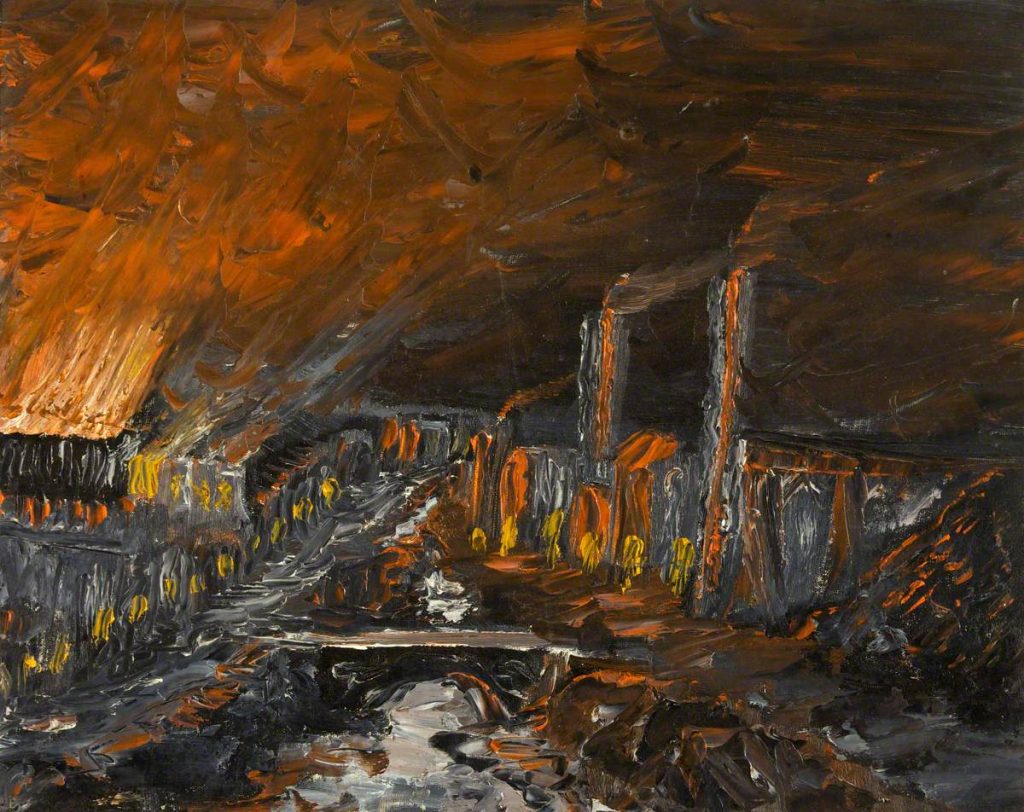
Oil Painting of Abernant Ironworks by David Workman (ACVMS:1998:939)
Geoffrey Evans, Cynon Valley Museum Volunteer, May 2020.
Images copyright RCT Libraries Service unless otherwise stated. The RCT Library Service is searchable via this link.
Thanks for reading!
We’re working hard to bring online content to you during this period of uncertainty. You can see some of these on our Exhibition at Home page. If you’d like to support the Cynon Valley Museum during this time, please share this post with your friends and family. You may also like to make a donation! We’re a registered charity and really appreciate your support, we are looking forward to welcoming everyone back to the museum as soon as possible.
Like this?
You might be interested in receiving Y Chwa/The Blast, a quarterly newsletter for the Friends of Cynon Valley Museum, which includes collection highlights, museum news, and similar articles to this. Click here to find out more about the Friends Group.
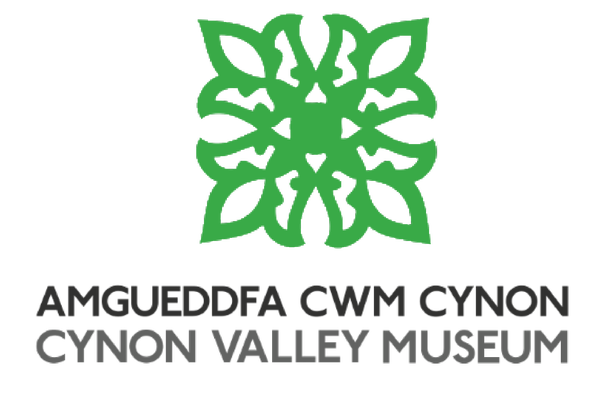
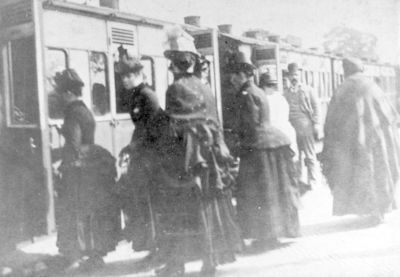
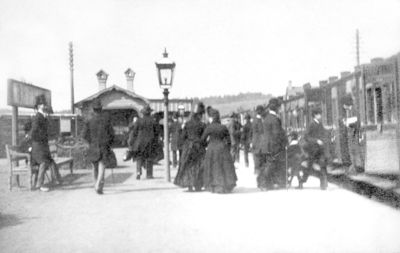
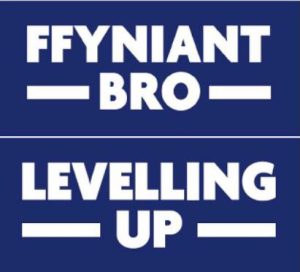

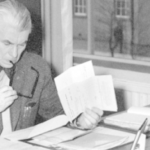
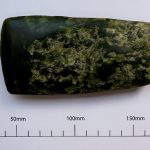
Very interesting
Fascinating reading how brilliant if this railway line was still in operation.
Is there any way that you have the names of the station employees of the photo that are sitting below the Abernant sign. If not is there anyway I could find those names.
Hi there! We are so sorry but we don’t have the names of the staff the only information we have is that they are staff from the station – not even a year. If you have any luck, please let us know!
Rather a lot of staff for a small station! The man on the right of the photograph is dressed a bit like a policeman but I cannot make out what the word is on his cap. He seems to have a number of the collar of his coat. The ones in the centre clearly have GWR (Great Western Railway) on their caps. The one on the left of the picture seems likely to be a bus conductor with his ticket machine and cash bag. Tickets were issued at Abernant station and not on the train. In those days the quickest way to get from Aberdare to Merthyr would be to use the council bus from the town centre to Abernant station and take the train through the tunnel.
Any information on this wooden viaduct you can make out where it once stood as the embankment us really steep